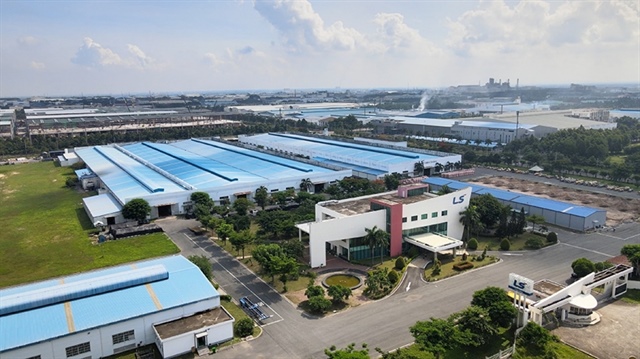Motorbike makers eye exports
Motorbike makers eye exports
Motorbike manufacturers in Viet Nam are looking to push up exports as domestic market narrows and competition becomes fiercer, according to a Saigon Economics Times report.

The report says that the Vietnamese market consumed about 3.11 million motorbikes in 2012, a year-on-year decrease of 6.6 per cent.
Honda Viet Nam, the biggest manufacturer and seller of motorbikes in the country, saw sales fall by four per cent to 1.97 million units.
Motorbike companies say last year was the first time that the domestic motorbike market experienced a decline in sales.
The situation has forced them to adjust production plans, vie with each other to launch several new styles and offer promotions to attract more customers to address their inventory problem.
For instance, Honda Viet Nam introduced five new styles, followed by Yamaha with four.
Falling sales have sparked fierce competition among motorbike companies particularly in the scooters segment, involving big players like Honda, Yamaha, Piaggio and Suzuki.
Scooters accounted for 40 per cent of the total two-wheeler sales in the domestic market in 2012.
A Piaggio representative said that the shift among Vietnamese consumers, from using geared motorbikes to scooters, has created opportunities for the company to implement its development strategy to dominate the high-end scooter segment.
While motorbike makers fight to increase their market share, they are set to face further constraints.
Under adjustments made to a road transport plan (until 2020 with a vision until 2030) by the Ministry of Transport, the number of motorbikes was to be kept down to 36 million by 2020.
Drastic measures
However, the number of registered motorbikes has already crossed 37 million, meaning the ministry would have to apply several drastic measures to limit the number of two-wheelers plying the country's roads.
Meanwhile, consumption in the domestic market was predicted to reach 45 million units by 2018 before the scheme was adjusted, so many companies had intensified investment to increase their production capacity to meet the increasing demand.
In particular, Honda Viet Nam injected an additional US$500 million into its factories to increase its combined production capacity to 2.5 million units per year. Yamaha Viet Nam also raised its capacity to 1.5 million units per year and Italy-based Piaggio to 300,000 units per year.
Meanwhile, Taiwan's Kymco has decided to invest an additional US$23 million to build a new motorbike factory with an annual capacity of 80,000 in the southern province of Binh Duong
Motorbike makers now estimate that the country's total production capacity has exceeded 5 million units per year while the domestic sale of the vehicles will be constrained to around 3 million per year, creating huge volumes of unsold stock.
Increasing exports is one way to deal with the problem.
Honda Viet Nam has already exported several models including Dream and Wave to other Southeast Asian countries, and SH and PCX to European countries. The company has announced plans to ship Lead 125 CC motorbikes to Japan.
Piaggio Viet Nam has already begun exporting its products to other ASEAN countries and is looking to find a toehold in the Taiwanese market.
vietnamnews


























